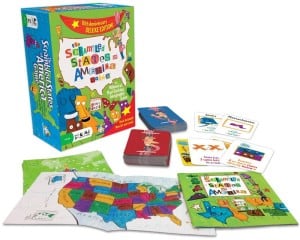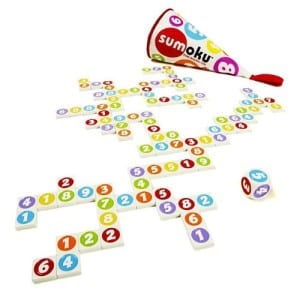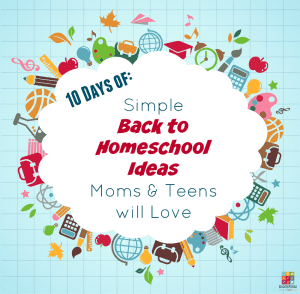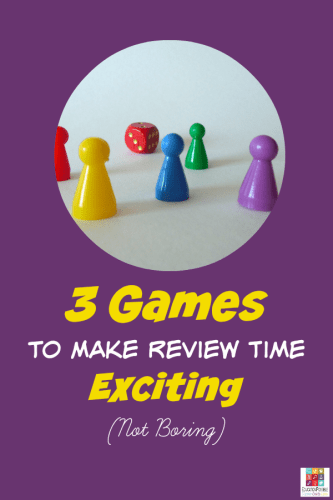3 Games to Make Review Time Exciting (not Boring)
I’m always looking for review games that will make lessons more interesting for my tweens. Some that are also fun board games for teenagers.
When it comes to memorization and review time, I do whatever I can to avoid flashcards. There’s nothing inherently wrong with them, they just don’t work well for my children. They find them incredibly boring, and to be honest, so do I.
Fact review is a basic part of education, even for homeschoolers. Most people need to be shown or taught material multiple times before it sticks. Think about it. How did you learn your times tables or the letters of the alphabet? Constant review.
The need to brush up on facts doesn’t end once your child enters middle school. I’m constantly checking what my kids remember about certain material, especially after we’ve taken a break from school.
To accomplish this, I turn to educational games whenever I can.
This post contains affiliate links.
Review Games for Middle School
Let older kids brush up on past lessons with these educational games. Review time is an important part of school, so why not make it as fun as possible?

Scrambled States
Want to see what your kids remember about American Geography? Play a couple of rounds of Scrambled States with them. This fast-paced game will definitely keep them on their toes.
Although they don’t have to know their geography facts down cold, the more they know, the better they’ll do.
How to Play:
- To begin, everyone is given 5 state cards that they place in front of them, right side up. Each one includes a cartoon image of the state, its capital, and its nickname.
- The first player turns over a scramble card and all players rush to be the first person to match one of their state cards to the information on the scramble card.
- Let’s say the scramble card says, “Nickname starts with E, F, or G.” The first person who slaps their card, while shouting out the state’s name, wins, and gets to put the winning card in their keep pile.
- When a player turns over a “Go the Distance” card, she immediately flips over a new state card as well. Players look to see which one of their 5 states is closest to the one that was just shown. Whoever is closest gets to keep both cards. In the event of a tie, (both states seem equidistant) the winner is the one who finds their closest state first, so it pays to be quick!
- The person with the most state cards at the end of the game wins.
My kids love playing this game and I’ve definitely seen an improvement in their US geography knowledge.

Blurt!
Looking for a way to help your kids brush up on vocabulary? Blurt! is the perfect solution. It’s amazing how tricky it gets when you’re trying to think of a word while racing against everyone else. Often, simple clues turn out to be more challenging than first thought.
How to Play:
- Players take turns reading the clue from the cards.
- The reader chooses a card, then rolls the die. He reads aloud the clue corresponding to the number he rolled.
- For example, “To force a person who is not a citizen to leave a country.” (deport) or “A large brown seaweed.” (kelp)
- Players shout out the word they think matches the clue. The person with the correct answer moves ahead the number of spaces on the die.
- The first player to make it around the board first wins.
We often play this game as a family and our time together is always full of laughter. Plus, while playing, I get to see my daughters’ vocabulary skills in action. Priceless!

Sumoku
Sumoku is a fun math game that will really test your child’s basic math skills. Because math builds on itself, it’s important to keep strengthening the most elemental functions, even as your kids get older. In our house, this is done through games like this one and Number Rings.
They’re two of our favorite math games for middle school.
How to Play:
- After players choose their 8 tiles, one player rolls the die.
- The number rolled is the key number and everyone will be laying down rows or columns adding up to a multiple of the key number.
- Say the number rolled is a 5. When it’s your turn, lay your tiles down so that the row or column you create adds up to a multiple of 5.
- Pretend you have the following tiles – 9, 8, 4, 1, 2, 5, 4, and 7. If there was a 2 played before, with room for you to build from, you could lay down your 9, 1, 5, 7, 4, 4, and 8 tiles because together (with the previously played 2) they equal 40, a multiple of 5.
- You score the number of points you successfully play each round. The person with the highest score wins.
A cross between scrabble and sudoku, this game definitely works on your mental math skills as you try to get the highest score possible each round.
As you can see, games can be wonderful learning tools and make a great addition to a homeschooler’s lesson plans.

More Educational Board Games for Middle School
- Double Ditto is a fun board game for tweens that you can easily adapt for your homeschool review time. I show you how and shared ideas for using it in history, science, geography, and more.
- American History board games like American Trivia and others are a fun way for kids to learn history while having a ton of fun.
- Here are 50+ fun and interesting middle school math games.
What educational games do you use in your home school?
Make sure to check out all of our other Simple Back to Homeschooling ideas!


